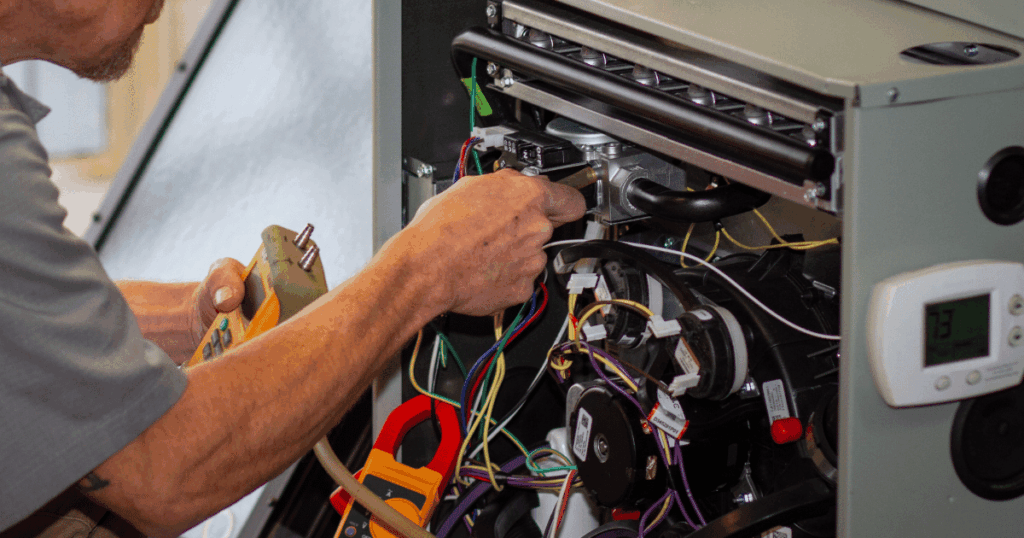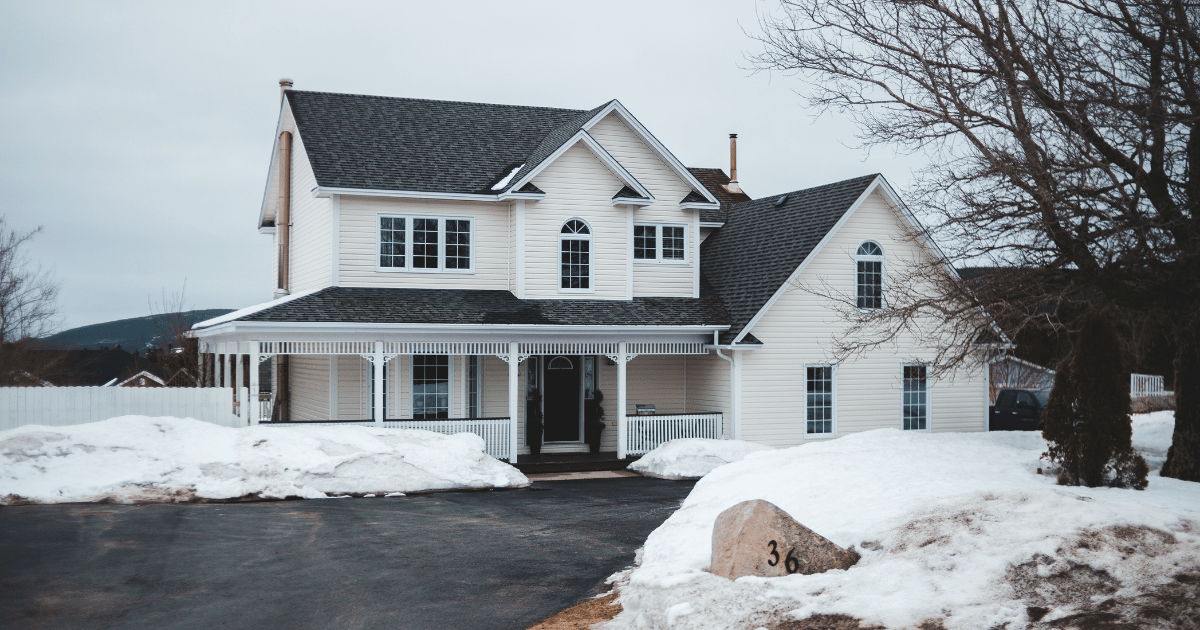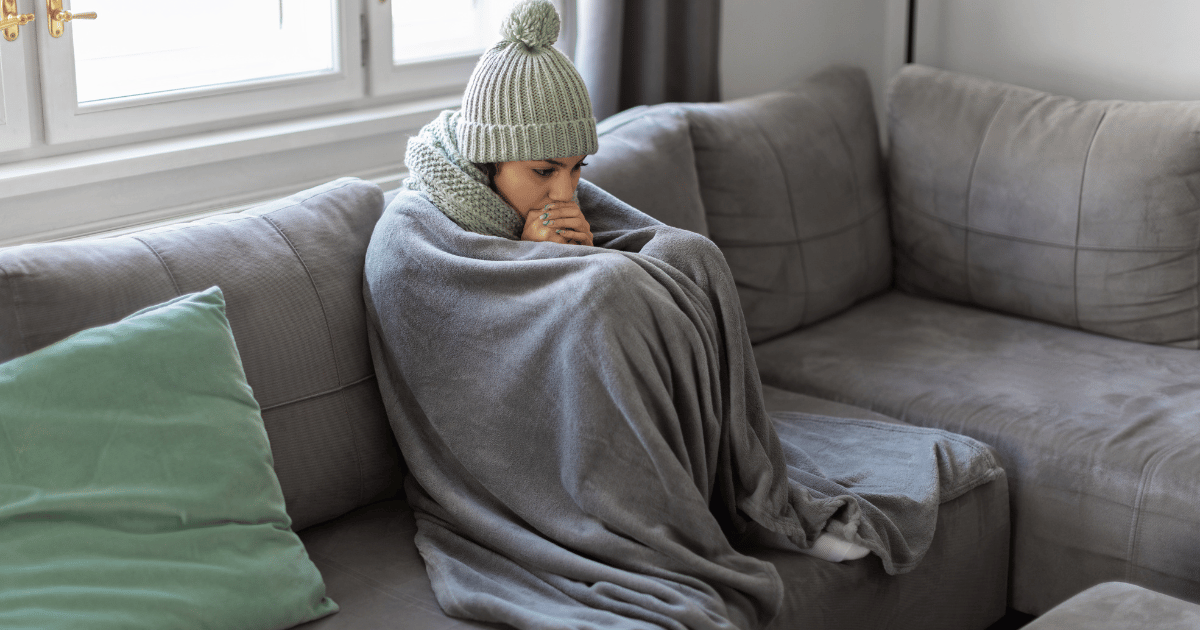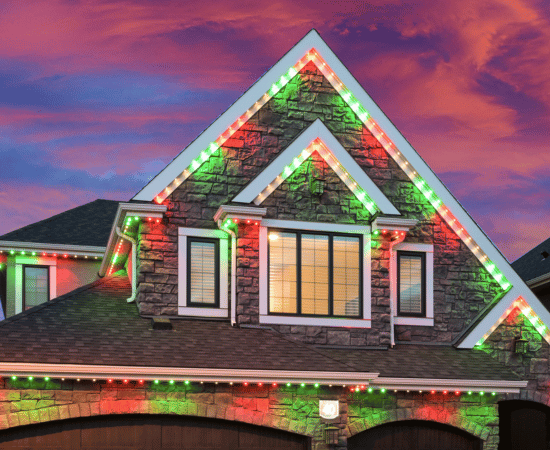Quick Winter HVAC Tips
- Change your furnace filter before temperatures drop.
- Clear leaves, debris, or snow from around your outdoor AC or heat pump.
- Keep vents open to support airflow and even heating.
- Check thermostat settings and test the heat early.
- Schedule a tune-up if your system is older or struggling to keep up.
Central Illinois weather can shift fast. One week feels mild, and the next brings bitter cold, heavy snow, or ice. Those swings can push your HVAC system harder than expected. Winterizing doesn’t need to be complicated, but a few steps can protect your system, improve comfort, and reduce the risk of mid-season problems.
This guide highlights what actually matters, what you can skip, and when it makes sense to call a professional.
Why Winterizing Your HVAC System Matters in Central Illinois
Cold snaps here stress both the furnace and the outdoor unit. Wind, ice, and debris can limit airflow or cause freezing. Indoors, blocked vents or a dirty filter can create uneven heating and rising utility costs.
Winterizing helps your system stay reliable through long, cold spells and gives you a chance to catch warning signs before temperatures drop.
10-Step Winter HVAC Checklist for Central Illinois Homes
A few simple tasks can make a noticeable difference. These steps cover the most common issues homeowners face during winter.
Inside the House
- Replace or clean your furnace filter.
- Make sure supply and return vents are fully open.
- Check your thermostat schedules before the first cold stretch.
- Test carbon monoxide and smoke detectors.
Around the Outdoor AC or Heat Pump
- Clear leaves, branches, and debris from around the unit.
- Confirm the unit sits level and drains well.
- Keep at least two to three feet of space clear on all sides.
Before the First Deep Freeze
- Run a short test cycle on your furnace.
- Listen for unusual noises or smells.
- Note any rooms that never reach the temperature you set.
Now that the quick checklist is covered, here’s a closer look at the outdoor unit, which is often overlooked during winter prep.
How to Winterize Your Outdoor AC Unit or Heat Pump
Most people think winterizing applies only to the furnace. The outdoor unit matters, too, especially once snow and ice begin to accumulate.
Clean and Inspect the Outdoor Unit
Rinse away dirt and dust when temperatures are above freezing. Use a gentle spray to avoid bending the fins. Make sure the power is off before rinsing. Check that water drains away from the base. Look for damaged panels, rust, or loose wiring. Catching minor issues now can prevent bigger problems later.
Clear Space Around the Unit
Airflow matters in every season. Keep two to three feet of open space on all sides. Trim shrubs and move stored items away from the unit. Check gutters and downspouts to make sure runoff does not land on the equipment.
Protect It From Ice, Not From Air
Snow on top of the unit rarely causes trouble. Roof runoff that freezes on the cabinet does. If melting snow drips directly onto the system, consider adding a simple diverter. Avoid full wraps or airtight covers, which limit airflow.
Should You Cover Your AC Unit in Winter?
Many homeowners ask whether they should cover their outdoor AC unit in winter. Most outdoor units do not need a full cover. Tight covers trap moisture, which speeds up rust and corrosion. They can also create warm pockets that attract small animals.
A breathable top cover may help in a few cases, such as older units under trees or heavy debris. The goal is to keep leaves out without sealing the unit. Always remove the cover before the first warm week in spring.
What to Do Instead of Covering
Focus on clearing debris, improving drainage, and checking the area after storms. These steps offer more protection than a heavy cover.
How to Keep Your HVAC or Heat Pump From Freezing Up
Frost on a heat pump is normal. Thick ice is not.
Normal Frost vs. Problem Ice
Heat pumps use defrost cycles to melt frost. Frost should disappear on its own. If ice forms a thick block or grows around the fan, the system needs attention.
Steps Homeowners Can Safely Take
Keep snow at least a few inches away from the unit. Replace a dirty filter to support airflow. Make sure indoor vents are open and unblocked. Do not chip ice with tools or pour hot water on the unit.
When to Call a Professional
- The unit never clears frost during its defrost cycle.
- The system trips breakers or shuts off without warning.
- You hear grinding, scraping, or other unusual noises.
- Ice returns quickly after you clear the snow and change the filter.
- You notice weak airflow or rooms that never warm up.
Winter HVAC Settings and “Rule of Thumb” Questions
Homeowners often ask how their system should perform during freezing weather.
What Is the 20-Degree Rule for HVAC?
Most systems can heat your home to about 20 degrees above the outdoor temperature. During extreme cold, the system may run longer to hold that difference. This helps you understand when your system is working normally vs. struggling.
When Is It Too Cold for My System?
Older furnaces and heat pumps are more prone to stress in sub-zero temperatures. Watch for short cycling, loud operation, or larger temperature swings between rooms. These signs point to performance issues.
Do You Need a Professional Winter HVAC Tune-Up?
Homeowners can handle most basic winter prep, but a tune-up helps catch issues you cannot see. A technician can spot early wear, confirm that safety components are working, and ensure the system is ready for winter.
If you want ongoing support, our HVAC maintenance plan includes seasonal inspections and priority scheduling for service when problems arise. It’s a simple way to stay ahead of breakdowns without having to guess what your system needs.
What a Winter HVAC Visit Usually Includes
A tune-up checks heating components, safety controls, and airflow. It also includes testing your thermostat, inspecting the heat exchanger, and reviewing basic electrical parts.
When a Tune-Up Is Worth Scheduling
A tune-up helps if your system is older, you notice higher bills, or your home feels uneven. It also helps during long cold stretches, when your system runs more often.
How C-U Trade Services Handles Winter Checks
Our team works through Central Illinois winters every year. We service furnaces, heat pumps, boilers, and packaged systems. We’re also available 24/7 for emergency repairs when something fails during severe weather.
Winter HVAC FAQs for Central Illinois Homeowners
How do I winterize my HVAC system myself?
Change the filter, clear vents, test the furnace, and remove debris from around the outdoor unit.
How do I winterize my outdoor AC unit?
Rinse the cabinet when above freezing, clear debris, and confirm proper drainage. Avoid sealing the unit with a heavy cover.
Can I spray water on my AC unit?
A gentle spray works when temperatures are warm enough. Avoid pressure washers.
How often should I service my HVAC system?
Most systems need a check once a year. Older systems may need seasonal visits.
How do I keep my heat pump from freezing?
Clear snow, replace filters, and monitor the defrost cycle. If ice keeps forming, call a technician.
Need Help Winterizing Your HVAC System in Central Illinois?
If you notice ice buildup, unusual sounds, or uneven heating, we can help. Our team handles HVAC repair, maintenance, and replacement across Central Illinois. We also address electrical and plumbing issues that can affect system performance.
If you need a winter check or repair visit, give us a call. We’re ready when you need us.




